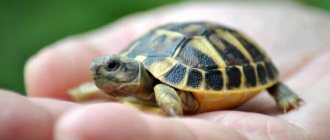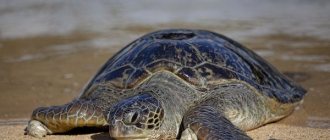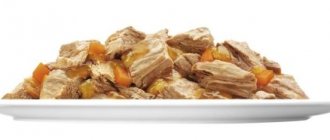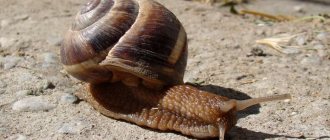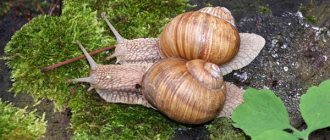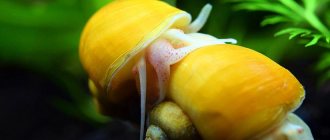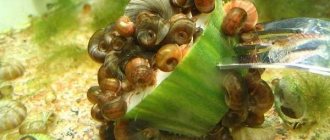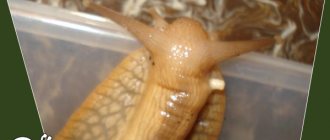Complete nutrition for aquarium fish is provided by such a product as Gammarus. This freshwater crustacean is known to fish breeders in the same way as jigs, humpbacks, and boogers. Most often sold dry.
- 1 Description and natural habitat
- 2 Nutritional value of Gammarus
- 3 Mr. Tail recommends: how to feed Gammarus to underwater pets
- 4 Extraction and breeding of Gammarus
- 5 Feed storage methods
Description
Gammarus got its name from the transcription of the Latin name Gammarus. They belong to the genus of higher crustaceans. These crustaceans belong to the order Amphipods due to their ability to jump out of the water not forward, but sideways. Gammarus is not a specific species, but a whole genus. Includes over 180–200 species of crayfish.
View this post on Instagram
Gammarus pulex collected in a nearby river. Gammarus is an amphipod crustacean genus with more than 200 species described making it one of the most speciose genera of crustaceans. I really love water critters. #gammarus #scuds
A post shared by Nicola (@nicosimons) on Apr 5, 2022 at 4:26am PDT
This genus is widespread in the Holarctic region. They are not very sensitive to the salt content in water - they live in both fresh and salt waters of seas and other bodies of water. They lead a secretive lifestyle - they live under rocks and in the sand near the shore.
Other names are mormysh, amphipod, sea fleas.
Appearance
Outwardly it looks like a small copy of a shrimp, bent in the form of an arc. Body length is 0.5-1.5 cm. The body is divided into 14 segments and protected by a chitinous protective shell layer. For vision and touch, the head has one pair of eyes and two pairs of whiskers. Whiskers help to feel the bottom in search of food.
They move with the help of 18 limbs. The legs on the chest are designed for breathing; they have gill slits. The next 6 legs are needed for movement. And the 6 rear ones are designed for jumping.
Body color depends on the food the jig eats. Herbivores acquire a green tint; those that eat protein foods and receive a lot of sun become light brown. Deep-sea ones are often colorless and translucent.
Life cycle features
During its short life, the jig manages to molt dozens of times. In summer, shedding occurs every week, and in winter twice a month.
At the 8th molt, the female develops growths on her abdomen in which eggs will be laid. After another 2 moults, the female is able to give birth to offspring.
Lifespan
The lifespan of gammarus is 11 months to a year.
Gammarus nutrition
Gammarus feeds on plant and animal foods. These are mainly soft parts of plants, most often already decaying fallen leaves and grass. The same applies to animal food - it prefers dead remains.
This brings a certain benefit to the pond - gammarus cleanses it of harmful toxic residues. They also feed on plankton. They can eat small worms, but at the same time they attack them in a flock.
They gather together to feed if they find a large object that can be used for a hearty lunch. If crustaceans find dead fish in a fishing net, they will easily gnaw through the tackle, along with the prey.
How to feed fish
Mormysh is the record holder for the amount of protein. Therefore, many types of fish are fed with it. They contain valuable carotene. It makes the color of the fish bright and colorful.
Fish should not be fed live or frozen crustaceans. The food is treated to remove bacteria and softens when treated with hot water. The crustaceans are filled with water for half an hour. If the chitinous layer has become soft, then the food is ready.
Dried food does not require preparation. If necessary, the feed is crushed for better consumption.
Don't feed your fish only crustaceans. Alternate with other foods, such as daphnia, bloodworms, tubifex, for better absorption and balanced nutrition.
Interesting Facts
- The chitinous shell of Gammarus contains strong allergens. Therefore, do not leave children near an open container containing this food. If you notice that your little fish lover has signs of allergies, do not try to get rid of the aquarium right away. Remove the food for a while.
- The crustacean gammarus contains a lot of carotene, so the fish feeding on it will be brightly colored. But you shouldn’t overuse it and feed your pets – fish, turtles, snails – only this food. The menu should be complete and balanced.
- Parasitic amphipods exist in nature. They are distinguished by their excellent vision. They need this in order to “look out” for a suitable swimming animal - the “master”. They can change it several times during their life.
- In some amphipods on Lake Baikal, the male representatives are so much smaller than the female ones that they are nicknamed “dwarf”.
- Due to the irregular shape of the body, the jig behaves interestingly when caught in the hand. It rotates in the palm of your hand like a top, lying on its side.
- These crustaceans can jump out of the water to a height 100 times their size.
- In the aquatic environment there are gourmets who are very fond of gammarus, consider it a delicacy and, if possible, eat only it. This is trout fish. If you take these crustaceans with you when fishing for trout, good fishing will be guaranteed!
How to mine
Mormysh are sold in pet stores. But buying them in large quantities can be expensive.
You can catch jigs yourself. They live in almost every body of water.
How amphipods are obtained:
- Using straw/hay. For fishing you will need to build a frame with a fine mesh. Stuff straw inside the structure. After some time, crustaceans will fill the voids in abundance. After this they are pulled out of the water. Do this quickly before the crustaceans jump back into the water.
- Using a net. First you need to find a large flock of crustaceans. It is better to do this in calm weather. The flock is caught with a net with a fine mesh and moved to the shore.
- Fishing with a net. The net is suitable for industrial-scale fishing. With its help, they catch not only crustaceans, but also other bottom inhabitants.
Artemia
“This is a truly precious species of crustaceans from the class of branchiopods,” said the interlocutor. — It is of greatest interest in terms of production: demand for it dictates fairly high prices. Although in the recent past no one imagined that anyone would need Artemia crustaceans at all, especially abroad. But as it turned out, Artemia is successfully used there as a starter feed for growing sturgeon, and also as feed for shrimp. The price for 1 kg in Europe reaches 50 US dollars.
Altai has large reserves of artemia: over 50 lakes located in the Kulunda steppe. One of the most promising reservoirs in the region is Bolshoye Yarovoye. Industrial harvesting of artemia has been carried out here since 1978.
Over the past 20 years, scientifically recommended volumes of withdrawal of this resource have increased on the lakes of the Altai Territory from 13.6 to 1090 tons. We emphasize: these are only recommended volumes. But today there is no one on the lakes! There are small artisanal harvesters who poach along the shores in small seasonal teams, hiding from fisheries inspectors, and enterprises that harvest on a grand scale on a completely legal basis. Plus, near large production facilities there are buyers of “substandard” products, which are then sold through Russian pet stores.
In the region of Putin 2012, the production of artemia is at the final stage. At Lake Kulundinskoye, the harvest of artemia has ended. Fishing on Maly Yarovoe this year was limited. Bolshoye Yarovoye also did not produce the scientifically recommended volume that was planned to be withdrawn from this reservoir. The reason is the low-water, dry period.
Storage rules
Mormysh storage is available in 3 types. They are dried, frozen or stored alive. The shelf life of this gammarus food depends on the storage method.
Alive
Freshwater crustaceans are stored in fresh water, and marine crustaceans are stored in salt water. Therefore, it is easier to preserve freshwater jigs. When fishing, collect soil from the same reservoir.
An aerator is attached to the container with the jig and placed in a cool and dark place. Half of the water is changed daily.
Gammarus has no food in the water at home, so store it for no more than a couple of days. They are treated before feeding.
Dried
Live gammarus is suitable for drying. They are dried in a hanging state to prevent rotting. Dried crustaceans can be stored for no more than 3 months. Then they lose nutrients.
Frozen
Live crustaceans are needed for freezing. You should freeze not in whole pieces, but in small portions. Freeze at a temperature of 19–26 degrees. The shelf life is 2 years.
Lifestyle and habitat
Gammarus is found almost everywhere, even in the cold polar seas. Its home is fresh and brackish water bodies of different latitudes. Despite the fact that it is still a freshwater crustacean or freshwater shrimp, it inhabits any body of water, even slightly brackish water, as long as there is oxygen there.
There is a lot of it in rivers, lakes, and ponds. The flea cancer gathers under stones, among coarse sand or pebbles, quite close to the shore. You can find it under snags, trees that have fallen into the water, or on rotting plants. Prefers shaded places where it is cool and there is a lot of oxygen.
The temperature range that is comfortable for it is from 0 to 26 degrees Celsius. On the territory of Russia, the greatest diversity of this representative is observed in Lake Baikal. Mormysh grows all its life, so it constantly sheds, shedding its old shell and acquiring a new one.
During the warm season this happens every week. After the seventh molt, females develop lamellar outgrowths on their second to fifth legs. They form a brood chamber. After the tenth change of shell, the female becomes sexually mature.
The amphipod flea is a semi-aquatic inhabitant. During the daytime, it tries to hide somewhere in the water in a secluded place. Swims actively at night. Dies if there is little oxygen in the water. In late autumn, the crustacean burrows into the ground and falls into torpor. If there is a lack of oxygen, it can rise up and settle on the inside of the ice.
Reproduction
Breeding gammarus at home begins in late spring - early summer. In warm places, gammarus are capable of producing several offspring during the warm season. In cold waters there are only 1–2 offspring.
Gammarus breeding begins before the female molts. Partners choose each other. When molting, the male helps the female get rid of the remains of chitin and releases the seed. The male smears it around the chamber for his offspring. After fertilization, the male no longer participates in rearing. Dark colored eggs are laid in the brood chamber. When mormysh reproduce, the number of eggs is 15–30. In warm waters, eggs hatch after 2 weeks, in cold waters - after 1–2 months. The larvae grow in the chamber until the first molt, and then leave the female. The larvae are already fully formed and are able to survive on their own.
Protein poisoning
When feeding exclusively protein foods (gammarus), protein poisoning occurs in fish and snails. The pet becomes lethargic, refuses food, and does not move for a long time.
For treatment, protein is excluded from the diet and fed plant foods.
Poisoning is often caused by poor quality food. It is usually sold by weight and contains impurities of soil, sand, branches and bacteria.
Mormysh are sold dried, boiled, frozen and live. Prices also depend on this.
| Weight (g) | Price (rubles) |
| 50 | 20 |
| 100 | 40 |
| 500 | 120 |
| 1000 | 260 |
| 2000 | 400 |
Adviсe
- Store live gammarus for no more than 2-3 days.
- Do not buy large portions of dried crustacean; its shelf life is 3 months.
- Store amphipods in the refrigerator for no longer than a week (not in the freezer).
- Do not feed your fish exclusively with mormysh.
- Feed your fish more than just protein foods.
- Do not buy food in bulk, only in closed packages.
Gammarus is an excellent addition to the diet of underwater pets. The high content of protein and nutrients will balance the diet and make the fish healthier. Therefore, gammarus is the choice of many experienced aquarists.
Previous
InhabitantsA real water dragon in an aquarium?
Next
InhabitantsAbout keeping a red-eared turtle, which almost everyone gets
Nutritional value of amphipod
Nutritional value and calorie content are the first indicators by which fish food is selected. For full growth, fry need a high protein content in the feed, and adults need energy, the sources of which are fats and carbohydrates. The nutritional data shown in the table shows that gammarus is as valuable as commercial feed.
| Calorie content, kcal | Proteins, % | Fats, % | Carbohydrates, % |
| 300 | 56,2 | 5,8 | 3,2 |
Also, crustaceans are rich in carotene; it is this vitamin that is credited with the ability to enhance the natural color of the fish, making it brighter and more saturated.
